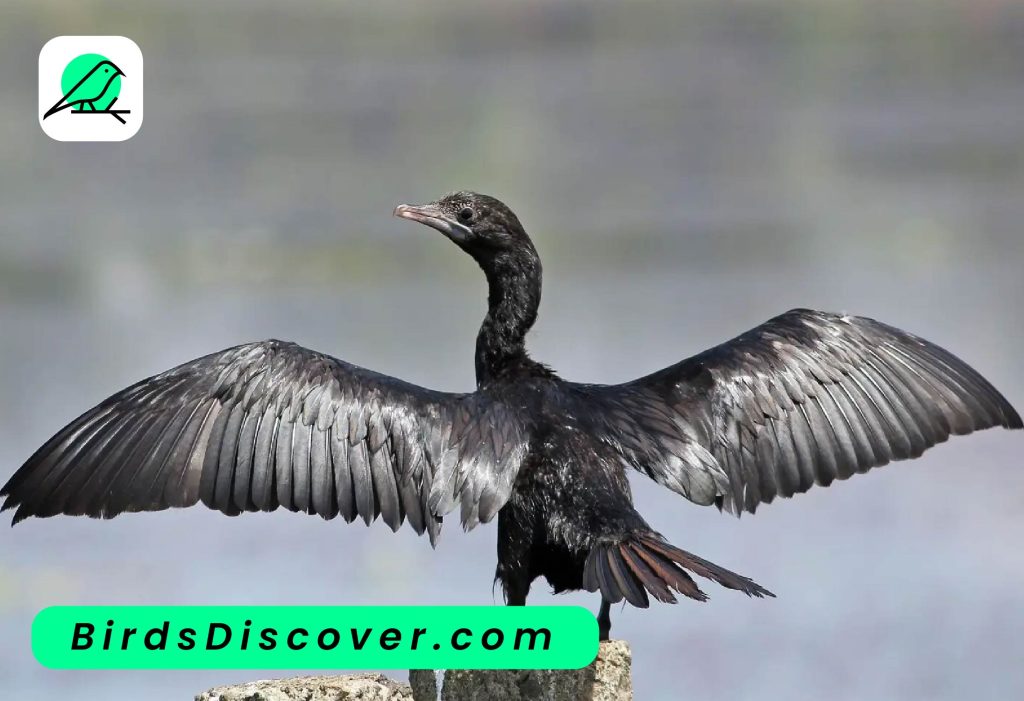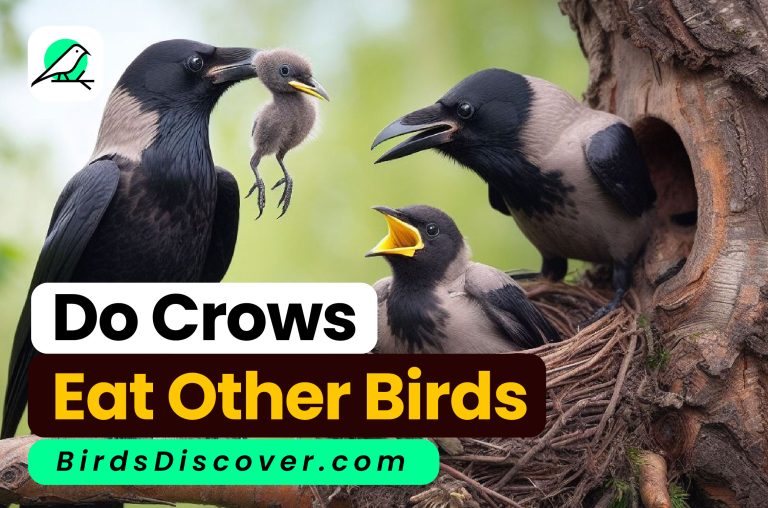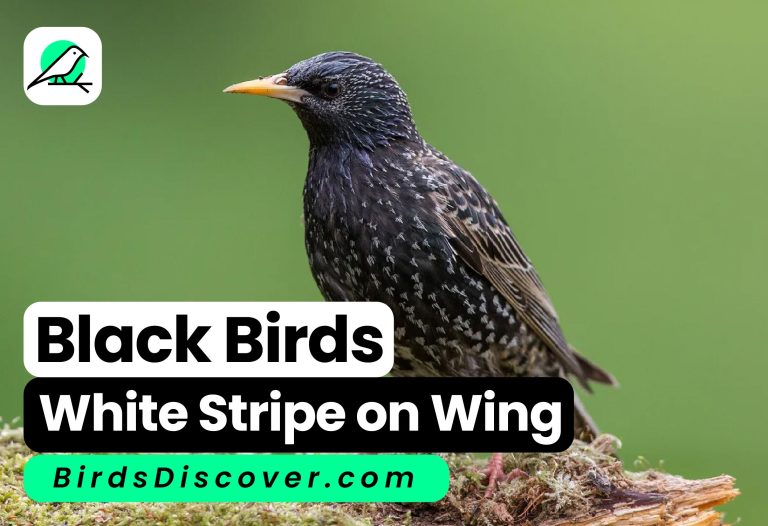Little Cormorant [Microcarbo niger]: Into Their World

Scientific Classification
| Kingdom | Phylum | Class | Order | Family | Genus |
|---|---|---|---|---|---|
| Animalia | Chordata | Aves | Piciformes | Picidae | Dryocopus |
Little Cormorant
The Little Cormorant (Microcarbo niger) is a small waterbird found across much of the Indian subcontinent and Southeast Asia. It has a glossy black plumage, with a slightly curved bill and webbed feet that make it an excellent swimmer and diver. Unlike its larger relatives, the Little Cormorant is often seen in small groups or alone, fishing in freshwater bodies like rivers, lakes, and ponds. This species is highly adaptable and can be found in both rural and urban environments, often perched with its wings outstretched to dry after a dive.
Summary
- Description: The Little Cormorant is a small waterbird with glossy black plumage and a slightly curved bill.
- Habitat: Found across the Indian subcontinent and Southeast Asia, it inhabits freshwater bodies like rivers, lakes, and ponds.
- Feeding: It is an expert swimmer and diver, primarily feeding on fish and small aquatic creatures.
- Behavior: Often seen alone or in small groups, it frequently perches with wings outstretched to dry after diving.
- Adaptability: The species is highly adaptable and thrives in both rural and urban environments.
- Breeding: Breeding occurs in colonies, usually in trees or bushes near water, where nests are built from twigs and leaves.
- Social Structure: Though often solitary while hunting, it congregates in larger groups during roosting and breeding seasons.
- Conservation: The Little Cormorant is not currently endangered and has a stable population across its range.
- Significance: This bird plays a crucial role in maintaining the balance of aquatic ecosystems by controlling fish populations.

Physical Characteristics
| Characteristic | Description |
|---|---|
| Size | Small to medium-sized bird, typically around 50-55 cm in length. |
| Plumage | Glossy black feathers with a slightly iridescent sheen in sunlight. |
| Bill | Slightly curved, slender bill, ideal for catching fish. |
| Feet | Webbed feet that aid in swimming and diving. |
| Habitat | Found in freshwater bodies like rivers, lakes, ponds, and wetlands. |
| Distribution | Commonly found across the Indian subcontinent and Southeast Asia. |
| Behavior | Often seen alone or in small groups, with wings outstretched to dry. |
| Feeding | Primarily feeds on fish and small aquatic organisms. |
| Nesting | Breeds in colonies, often in trees or bushes near water bodies. |
| Social Structure | Solitary during hunting but congregates in larger groups for roosting. |
| Conservation Status | Not currently endangered; has a stable population across its range. |
Distribution
The Little Cormorant is widely distributed across the Indian subcontinent and Southeast Asia. It can be found in countries such as India, Bangladesh, Sri Lanka, Nepal, Myanmar, Thailand, and parts of Indonesia. The species is commonly seen in freshwater habitats, including rivers, lakes, ponds, wetlands, and even urban water bodies. Its adaptability allows it to thrive in various environments, from rural to densely populated urban areas.
Behaviour
Foraging Behavior:
- Diving and Swimming: The Little Cormorant is an adept diver, using its webbed feet to propel itself underwater while hunting for fish and aquatic invertebrates.
- Solitary Feeding: It often forages alone or in small groups, diving repeatedly in a specific area until it depletes the food resources.
- Shallow Waters: Prefers foraging in shallow waters where fish are more accessible, often near the water’s surface or among aquatic vegetation.
- Surface Pattering: Occasionally, it may engage in surface pattering, where it skims the water surface with its feet while chasing prey just beneath.
Feeding Dynamics:
- Prey Selection: The Little Cormorant primarily feeds on small to medium-sized fish, but it also consumes aquatic invertebrates, including crustaceans and amphibians, depending on availability.
- Hunting Technique: It uses a combination of diving and swift underwater pursuits to catch prey, often swallowing smaller fish whole while still underwater.
- Feeding Times: The bird typically feeds during the early morning and late afternoon, taking advantage of the reduced light conditions to ambush prey.
Wing-Drying Behavior:
- Post-Dive Routine: After diving and swimming, the Little Cormorant perches with its wings spread wide to dry them, a behavior necessary because its feathers are not fully waterproof.
- Thermoregulation: This behavior not only dries the wings but also helps the bird maintain body temperature, as wet feathers can cause heat loss.
- Common Sight: Wing-drying is frequently observed in cormorants, with the bird often choosing exposed perches like tree branches or rocks where it can bask in sunlight and dry its wings effectively.
Breeding Season:
- Nesting Sites: The Little Cormorant nests in colonies, often choosing trees, shrubs, or reeds near water bodies. Nests are constructed from twigs and leaves, sometimes lined with softer materials.
- Breeding Period: The breeding season typically occurs during the wet season or early monsoon, providing ample food resources for raising chicks.
- Eggs and Incubation: The female lays a clutch of eggs, usually 3-5, which both parents incubate. Incubation lasts about 3-4 weeks, with both adults taking turns to keep the eggs warm.
- Chick Rearing: After hatching, the chicks are fed by regurgitation from the parents. They fledge and leave the nest about 6-8 weeks after hatching, becoming more independent as they learn to forage on their own.
Reproductive Cycle:
- Courtship and Pair Bonding: During the breeding season, Little Cormorants engage in courtship displays, including mutual preening and synchronized swimming, to strengthen pair bonds.
- Nesting: Pairs build nests together in colonies, typically located in trees, shrubs, or reeds near water. Nests are constructed from twigs, leaves, and other available materials.
- Egg Laying and Incubation: The female lays 3-5 eggs, which both parents take turns incubating. The incubation period lasts about 3-4 weeks.
- Chick Development: After hatching, the chicks are altricial (born helpless) and are fed by both parents through regurgitation. They fledge and leave the nest about 6-8 weeks later, having learned to hunt and forage on their own.
Parasitism:
- External Parasites: Little Cormorants can be hosts to external parasites such as mites, lice, and fleas, which may infest their feathers and skin, potentially affecting their health and plumage.
- Nest Parasites: Their nests may also be vulnerable to parasitic species like brood parasites, which lay eggs in the nests of Little Cormorants, leading to competition for resources between the host chicks and the parasitic young.

Species in same Genus
| Species Common Name | Scientific Name |
|---|---|
| Little Cormorant | Microcarbo niger |
| American Flamingo | Phoenicopterus ruber |
| Great Blue Heron | Ardea herodias |
| Black-crowned Night-Heron | Nycticorax nycticorax |
| Great Egret | Ardea alba |
| Snowy Egret | Egretta thula |
| Roseate Spoonbill | Platalea ajaja |
| Cattle Egret | Bubulcus ibis |
| Black Stork | Ciconia nigra |
| Marabou Stork | Leptoptilos crumenifer |
become noisy during the breeding season?
During the breeding season, many bird species become notably noisy as part of their courtship and territorial behaviors. This increased vocal activity serves multiple purposes: attracting potential mates, establishing and defending territories, and communicating with others of their species. For instance, the Northern Mockingbird performs an extensive and varied song repertoire, while the Common Loon’s eerie calls are used to demarcate territory and communicate with partners. Similarly, American Robins sing more frequently to assert their presence and attract mates. This vocal behavior is essential for reproductive success, helping birds to find mates and secure nesting sites.
Fun facts
The Northern Mockingbird can mimic the songs of up to 200 other bird species and even non-bird sounds, like car alarms.
The Common Loon’s eerie calls are so distinctive that they can be heard from over a mile away and are used to communicate over long distances
Indian cormorant vs little cormorant
| Characteristic | Indian Cormorant (Phalacrocorax fuscicollis) | Little Cormorant (Microcarbo niger) |
|---|---|---|
| Size | Larger, about 70 cm in length | Smaller, about 50-55 cm in length |
| Plumage | Dark brown to black with a paler neck | Glossy black feathers with iridescent sheen |
| Bill | Long and slender, slightly hooked | Slender, slightly curved bill |
| Feet | Webbed feet adapted for swimming | Webbed feet for swimming and diving |
| Habitat | Prefers larger water bodies like lakes and rivers | Found in various freshwater habitats including smaller ponds and wetlands |
| Distribution | Indian subcontinent and Southeast Asia | Indian subcontinent and parts of Southeast Asia |
| Behavior | Often seen in large groups and more solitary in nature | Usually solitary or in small groups, often seen drying wings |
| Nesting | Nests in trees or cliffs near water bodies | Nests in trees, shrubs, or reeds near water |
| Conservation Status | Generally stable, not considered threatened | Generally stable, with a stable population across its range |
Threats
- Habitat Loss: Destruction and alteration of wetlands, rivers, and lakes due to urbanization, agriculture, and industrial activities significantly reduce suitable breeding and feeding areas for cormorants.
- Water Pollution: Contamination from chemicals, heavy metals, and plastics in water bodies can lead to poisoning, reproductive issues, and a decline in fish populations, which are crucial for their diet.
- Overfishing: Depletion of fish stocks due to commercial and recreational fishing limits the food supply available to cormorants, affecting their health and reproductive success.
- Climate Change: Shifts in temperature, precipitation, and water levels can disrupt the availability of suitable habitats and alter fish distribution, impacting cormorant populations.
- Human Disturbance: Increased human activity around nesting sites, such as boating, fishing, and tourism, can lead to nest abandonment and decreased breeding success.
- Invasive Species: Introduction of non-native species that compete for food or habitat can negatively affect cormorants and their prey, leading to decreased survival rates.
- Fishing Gear Entanglement: Cormorants can become entangled in fishing lines, nets, and other gear, leading to injury or death.
- Illegal Hunting: In some regions, cormorants are hunted or poisoned due to perceived competition with commercial fishing interests.
- Disease: Outbreaks of avian diseases, such as avian botulism or Newcastle disease, can spread rapidly through cormorant populations, leading to high mortality rates.
Lifespan
Cormorants generally have a lifespan of 10 to 15 years in the wild, though some individuals can live longer in protected environments. Their lifespan can be significantly impacted by environmental threats and human activities.
Are social?
Yes, cormorants are generally social birds. They often live in colonies, especially during the breeding season, where they build nests close to one another in trees, shrubs, or on cliffs. Outside the breeding season, they can also be found in groups while foraging or roosting. This social behavior helps them find food more efficiently and offers protection from predators.
Common Names in Different Languages
| Language | Common Name |
|---|---|
| English | Little Cormorant |
| Spanish | Cormorán enano |
| French | Cormoran nain |
| German | Zwergscharbe |
| Italian | Cormorano nano |
| Portuguese | Cormorão-anão |
| Dutch | Dwergaalscholver |
| Russian | Малый куликан |
| Japanese | コビトウミウシ (Kobito umiushi) |
Conclusion
In concluding “Little Cormorant [Microcarbo niger]: Into Their World,” it’s evident that the journey into the lives of these remarkable birds reveals a complex and fascinating world. Through meticulous observation and study, we gain a deeper appreciation for their unique behaviors, adaptations, and ecological roles. The Little Cormorant, with its intricate balance of hunting prowess, social dynamics, and survival strategies, exemplifies the delicate interplay between species and their environments.
Our exploration underscores the importance of continued conservation efforts to protect these vital creatures and their habitats. By understanding and respecting their world, we not only ensure the survival of the Little Cormorant but also contribute to the broader health of our ecosystems. In the end, this journey into their world is a testament to the interconnectedness of all living beings and a call to action to safeguard the natural world that supports them.
FAQs
What is the Little Cormorant’s scientific name?
The scientific name of the Little Cormorant is Microcarbo niger.
Where can be found?
The Little Cormorant is found in South and Southeast Asia, including countries like India, Sri Lanka, Bangladesh, Myanmar, Thailand, and Indonesia. It prefers freshwater lakes, rivers, and wetlands.
How do they catch their prey?
Little Cormorants catch their prey by diving underwater. They use their webbed feet to propel themselves and their sharp beaks to snatch fish and other aquatic animals. They are skilled hunters, often diving multiple times to catch their food.
What is the breeding season of the Microcarbo niger?
The breeding season of the Little Cormorant (Microcarbo niger) typically occurs from November to March, depending on the region. During this period, they build nests in colonies, often in trees or shrubs near water, and both parents participate in incubating the eggs and caring for the chicks.
Do they build nests?
Yes, Little Cormorants build nests, usually in colonies. They construct their nests in trees, shrubs, or reed beds near water bodies. The nests are often made from sticks and other vegetation, and both parents contribute to building and maintaining them.
Are Microcarbo niger vocal?
Yes, Little Cormorants are vocal. They make a variety of calls, including croaks and grunts, which are used for communication between individuals, especially during the breeding season. Their vocalizations help in maintaining contact with mates and coordinating activities within the colony.
What threats do they face?
Little Cormorants face threats such as habitat destruction from urbanization and deforestation, pollution of water bodies affecting their health and prey availability, and overfishing, which depletes their food sources. Climate change and human disturbance also negatively impact their breeding success and overall survival.
How long do Microcarbo niger live?
Little Cormorants (Microcarbo niger) typically live for about 10 to 15 years in the wild.
Do they migrate?
No, Little Cormorants (Microcarbo niger) are generally resident birds and do not undertake long migrations. They typically stay within their established range year-round, though their movements can be influenced by local changes in water levels and food availability.
Are there any conservation efforts for Microcarbo niger?
Yes, conservation efforts for Little Cormorants (Microcarbo niger) include habitat protection and management, such as preserving wetlands and water bodies where they breed and forage. In some areas, organizations and governments work to reduce pollution and mitigate human disturbance around nesting sites. Monitoring programs also help track population trends and address potential threats.






